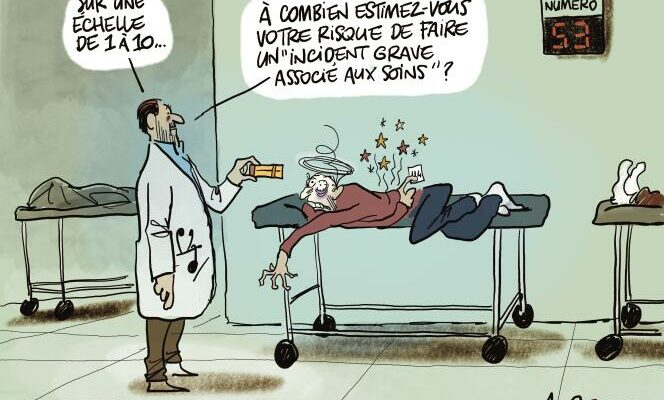In recent months, several deaths in emergency rooms have fueled the pages of newspapers and chronicles of supposed hospital failures. Could these tragedies have been avoided? This is the story of Lucas, 25, who died in the emergency room of Hyères (Var), after several hours spent on a stretcher, at the end of September 2023, and whose parents are now taking the case to court. That of an elderly patient, in Nantes, who died on January 2 after four hours in the “queue”, while other similar stories came from Strasbourg, Grenoble, Bordeaux… In the latter city, during the summer of 2023, emotions ran high after the chaotic journey of a pregnant woman, tossed from service to service, whose baby died in hospital.
These incidents give the impression of multiplying, even if there is nothing to categorically affirm this – nor to refute it. In health jargon, we speak of a “serious adverse event associated with care” to describe an unexpected event with regard to the state of health and pathology of the patient, and the consequences of which are either death or death. life threatening, or the probable occurrence of a permanent functional deficit.
Year after year, the data published by the High Authority for Health (HAS) on the subject are certainly on the rise – i.e. 2,385 incidents in 2022 compared to 1,874 events in 2021 – but the HAS itself recognizes this: evolution is to be credited to a ” culture “ of the declaration which is progressing in health establishments, where these events are far from systematically occurring. On the contrary, they are largely under-declared, underlines the HAS. These figures cover various situations, ranging from lack or delay in treatment to diagnostic or medication errors, from inappropriate prescriptions to complications of a therapeutic procedure.
A “symptom” of the hospital crisis
“There is no solid measuring instrumentconfirms Marc Noizet, the boss of SAMU-Ergences de France. What is certain is that today nothing allows these incidents to decrease, while the number of suffocated services continues to increase. » Unsurprisingly, the emergency room, the gateway to the hospital, is often punctuated.
“Emergency rooms are inherently a risky environment.recalls Mathias Wargon, head of emergencies at Delafontaine hospital in Saint-Denis (Seine-Saint-Denis). Because the patients, whose history we do not always know, arrive in large numbers, the teams rotate a lot, interruptions in tasks are frequent, each caregiver may have to monitor ten, twelve, fifteen patients at the same time.explains the emergency doctor. And, in this race against time to find the right diagnosis, it is sometimes the disease that wins. » Other doctors point out: emergencies are also a place of “breakup”or even “brutality”because families or loved ones are often not admitted inside these departments, unlike other floors of the hospital.
You have 70% of this article left to read. The rest is reserved for subscribers.
